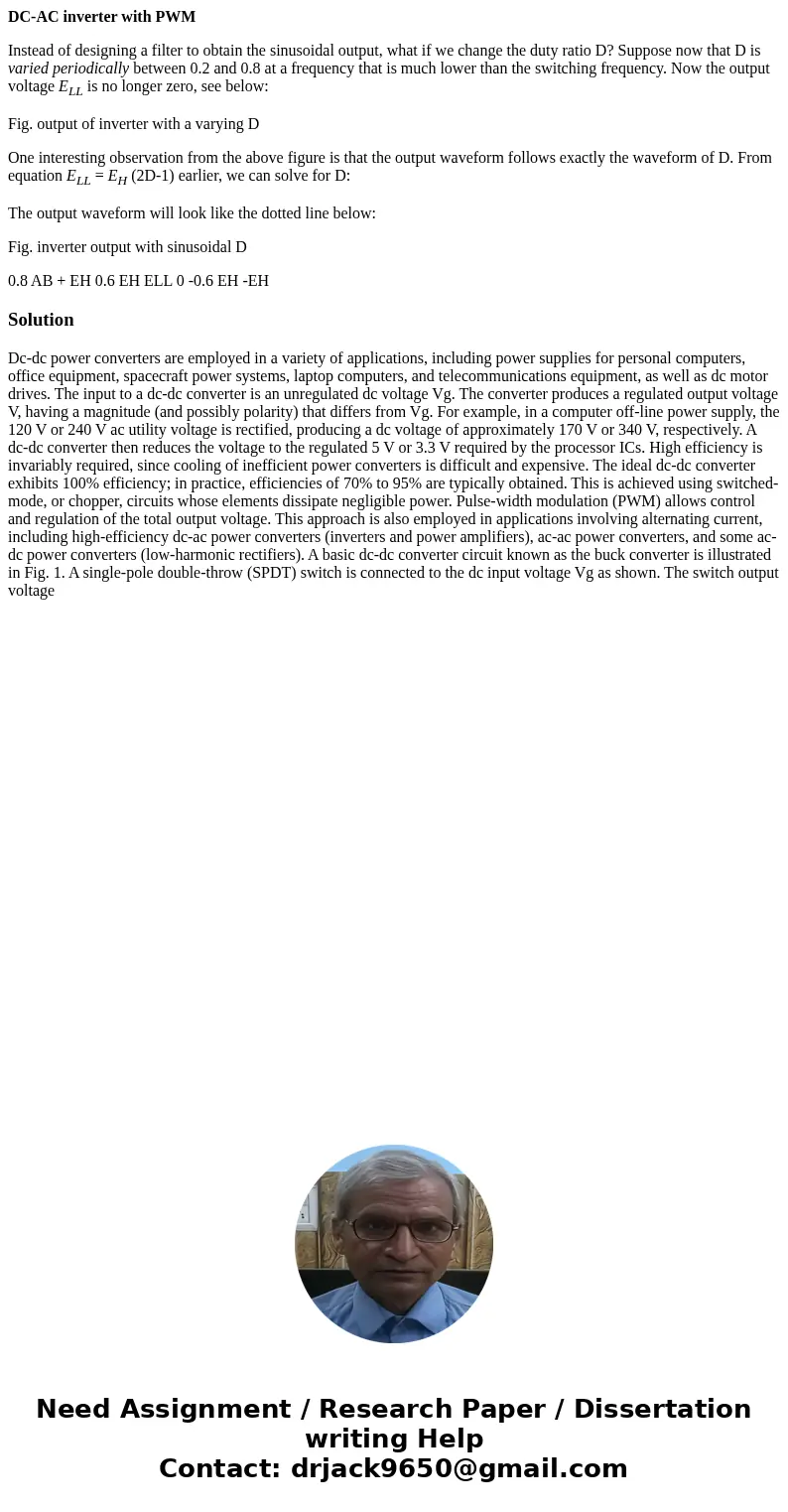DCAC inverter with PWM Instead of designing a filter to obta
DC-AC inverter with PWM
Instead of designing a filter to obtain the sinusoidal output, what if we change the duty ratio D? Suppose now that D is varied periodically between 0.2 and 0.8 at a frequency that is much lower than the switching frequency. Now the output voltage ELL is no longer zero, see below:
Fig. output of inverter with a varying D
One interesting observation from the above figure is that the output waveform follows exactly the waveform of D. From equation ELL = EH (2D-1) earlier, we can solve for D:
The output waveform will look like the dotted line below:
Fig. inverter output with sinusoidal D
0.8 AB + EH 0.6 EH ELL 0 -0.6 EH -EHSolution
Dc-dc power converters are employed in a variety of applications, including power supplies for personal computers, office equipment, spacecraft power systems, laptop computers, and telecommunications equipment, as well as dc motor drives. The input to a dc-dc converter is an unregulated dc voltage Vg. The converter produces a regulated output voltage V, having a magnitude (and possibly polarity) that differs from Vg. For example, in a computer off-line power supply, the 120 V or 240 V ac utility voltage is rectified, producing a dc voltage of approximately 170 V or 340 V, respectively. A dc-dc converter then reduces the voltage to the regulated 5 V or 3.3 V required by the processor ICs. High efficiency is invariably required, since cooling of inefficient power converters is difficult and expensive. The ideal dc-dc converter exhibits 100% efficiency; in practice, efficiencies of 70% to 95% are typically obtained. This is achieved using switched-mode, or chopper, circuits whose elements dissipate negligible power. Pulse-width modulation (PWM) allows control and regulation of the total output voltage. This approach is also employed in applications involving alternating current, including high-efficiency dc-ac power converters (inverters and power amplifiers), ac-ac power converters, and some ac-dc power converters (low-harmonic rectifiers). A basic dc-dc converter circuit known as the buck converter is illustrated in Fig. 1. A single-pole double-throw (SPDT) switch is connected to the dc input voltage Vg as shown. The switch output voltage

 Homework Sourse
Homework Sourse